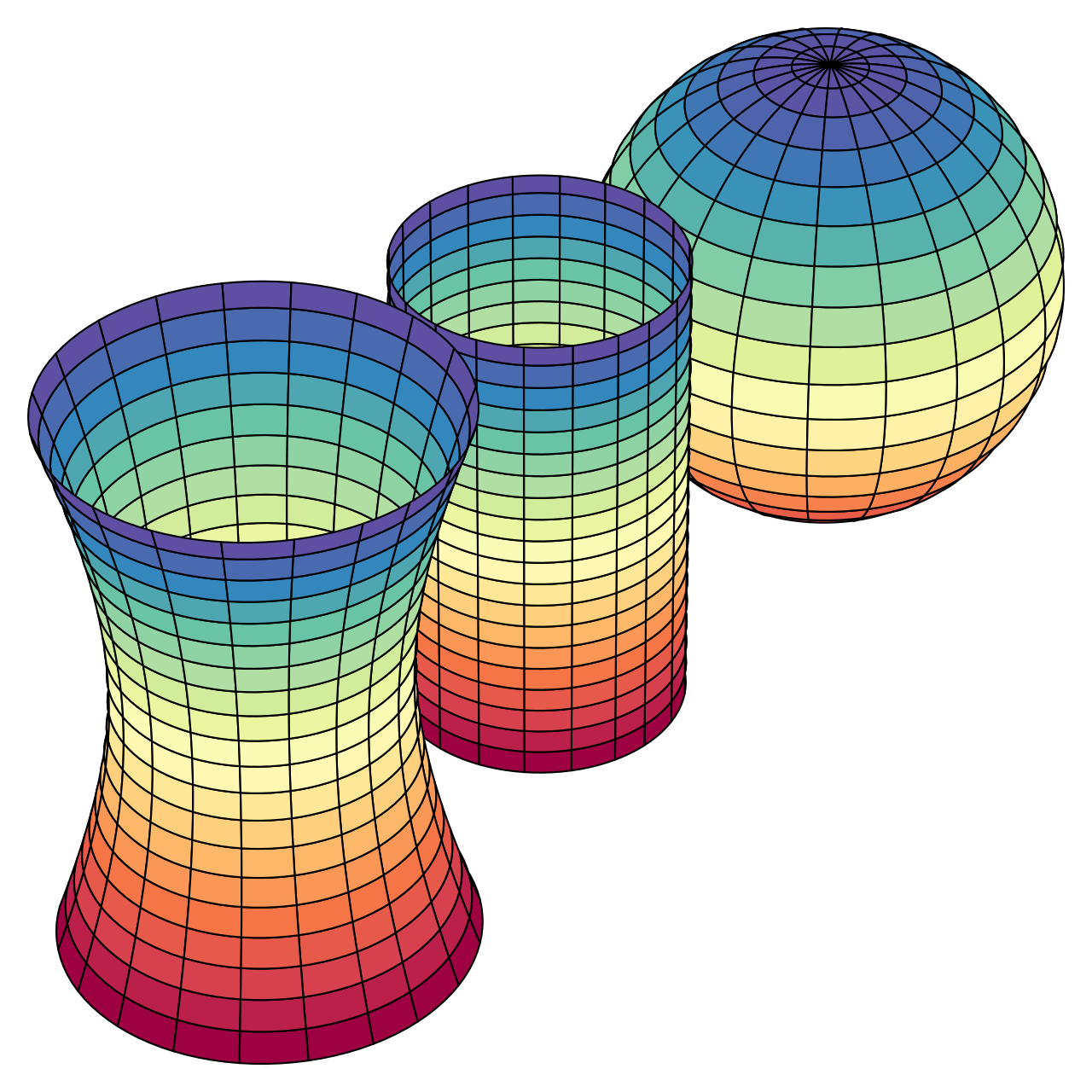Preamble
 |
| Gaussian Curvature (Wikipedia) |
Disassemble distance over a Riemannian Manifolds
The most general definition of a distance between two infinitesimal points on any geometry, or a fancy word for it, is a Riemannian Manifolds, is defined with the following definitions. Manifold is actually a sub-set of any geometry we are concerned with and Riemannian implies a generalisation.
Definition 1: (Points on a Manifold) Any two points are defined in general coordinates $X$ and $Y$, They are defined as row and column vectors respectively. In infinitesimal components. $X = [dx_{1}, dx_{2}, ..., dx_{n}]$ and $Y= [dx_{1}, dx_{2}, ..., dx_{m}]^{T}$.
Geometric description between two points are defined as tensor product, $\otimes$, that is to say we form a grid, on the geometry.
Definition 2: (A infinitesimal grid) A grid on a geometry formed by pairing up each point's components, i.e., a tensor product. This would be a matrix $P^{mn}$, (as in points), with the first row $(dx_{1} dx_{1},.....,dx_{1} dx_{n})$ and the last row $(dx_{m} dx_{1},.....,dx_{m} dx_{n})$.
Note that grid here is used as a pedagogical tool, points are actually leaves on the continuous manifold. Now, we want to compute the distance between grid-points, $dS^{n}$, then metric tensor come to a rescue
Definition 3: (Metric tensor) A metric tensor $G^{nm}$ describes a geometry of the manifold that connects the infinitesimal grid to distance, such that $dS^{n}=G^{nm} P^{mn}$.
Note that, these definition can be extended to higher-dimensions, as in coordinates are not 1D anymore. We omit the square-root on the distance, as that''s also a specific to L2 distance. Here, we can think of $dS^{n}$ a distance vector, and $G^{nm}$ and $P^{mn}$ are the matrices.
Exercise: Euclidian Metric
A familiar geometry, metric for Euclidian space, reads diagonal elements of all 1 and rest of the elements zero. How the above definitions holds, left as an exercise.
Conclusion
We have discuss that a metric tensor, contrary to its name, it isn't a metric per se but an object that describes a geometry, having magic ability to connecting grids to distances.
Further reading
There are a lot of excellent books out there but a classic Spivak's differential geometry is recommended.
